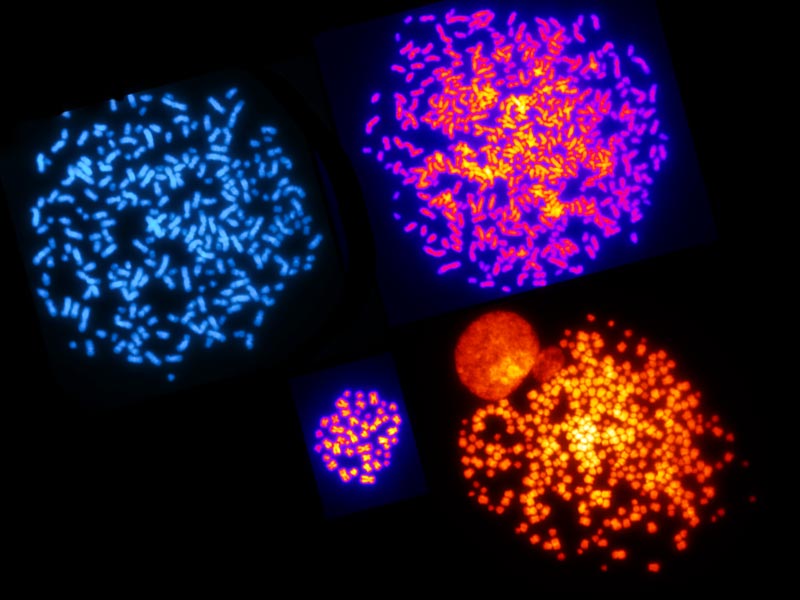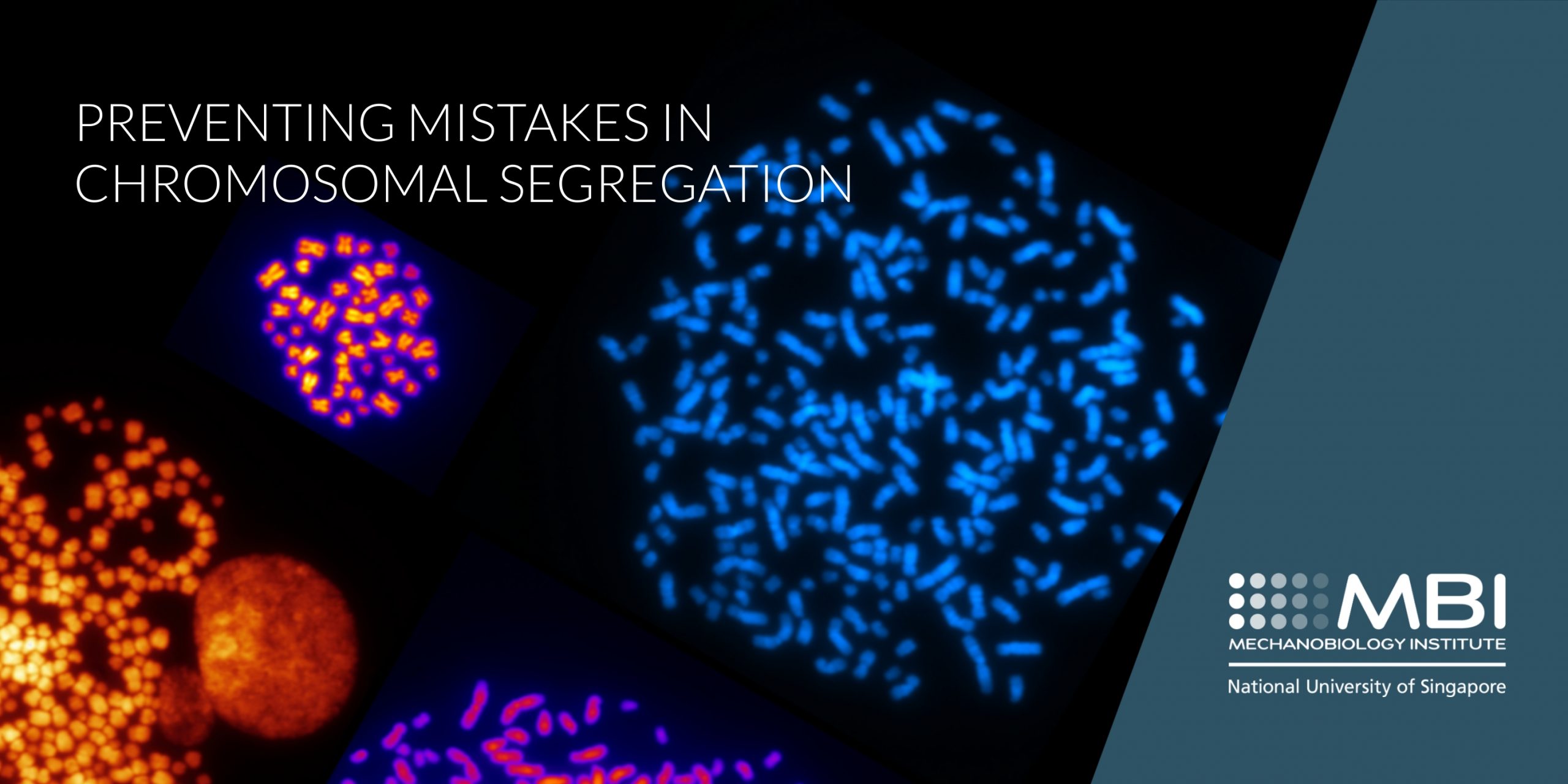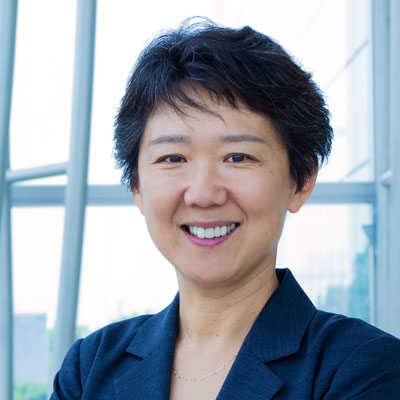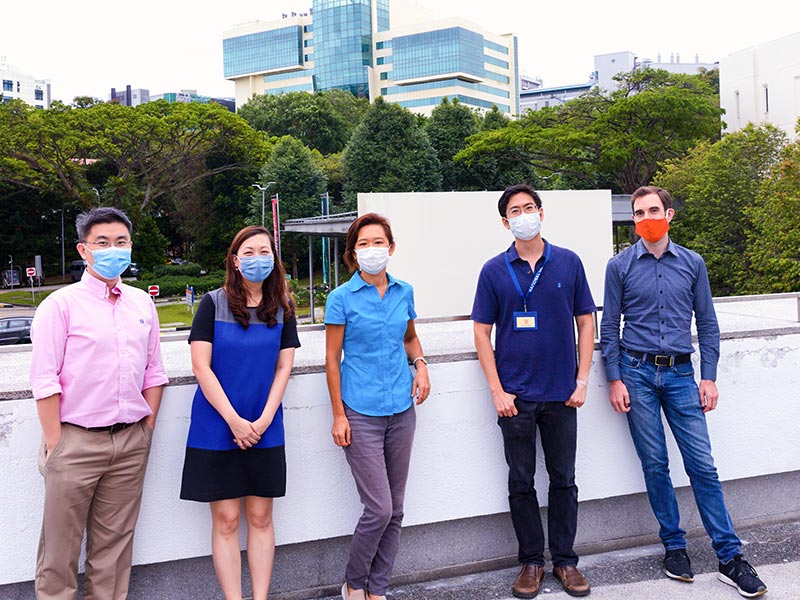Preventing mistakes in chromosomal segregation
Biological and mechanical checkpoints against aneuploidy
Written by Andrew MS Wong | March 2021
A new publication from the Li lab at the Mechanobiology Institute, National University of Singapore and Johns Hopkins University, USA provides fresh insights into how the ‘anti-cancer’ protein p53 may help protect cells from abnormal distribution of chromosomes during the process of cell division. The study is published in Cell Reports.

‘Chromosomal chaos’. Chromosomes in normal metaphase (top left), aneuploidy (top right), tetraploidy (bottom right) and polyploidy (bottom left).
One of the hallmarks of cancer cells in solid tumours is that they are aneuploid. This means that they have an abnormal number of chromosomes. For example, a typical human cell contains two pairs of 23 chromosomes for a total of 46, but in the case of aneuploidy, a cell may contain less or more than 46. Aneuploidy often arises when there are problems during cell division, especially during the process of mitosis where one parent cell divides into two daughter cells. During this process, the chromosomes of the parent cell are replicated, arranged on a mitotic spindle made out of cytoskeletal fibres, and separated into the daughter nuclei.
An interplay between genetic and mechanical factors are required for suppressing aneuploidy
Given the importance of cell division, there are number of ‘proof-reading’ mechanisms to ensure genome stability. The mitotic spindle serves as a mechanical checkpoint to ensure correct chromosome distribution. The protein p53 is known to guard against genome mutation and aneuploidy. Many cancers are associated with a loss of p53, while increased levels of p53 are thought to prevent DNA damage.
MBI Director Prof Rong Li and her PhD students Akshay Narkar and Blake Johnson, along with other colleagues from Johns Hopkins University, USA set out to investigate the relationship between p53 and aneuploidy in a variety of cell culture models. By using a drug to inhibit the spindle assembly checkpoint kinase protein MPS1 to disrupt proper chromosomal segregation, the researchers were able to reliably induce aneuploidy in range of 2D mammalian cell lines derived from either immortalized retinal epithelial cells or cancer tumours. The same drug treatment also induced aneuploidy in 3D primary cell cultures (known as organoids) derived from human mammary and mouse colon tissue.
Following induction of aneuploidy in 2D cell lines, p53 levels were increased and this generally had the effect of suppressing cell proliferation. Conversely, no activation of p53 or alteration in cell proliferation was found in aneuploid 3D cell organoids. These results initially pointed to the difference in 2D or 3D cell culture as the factor controlling the aneuploidy response. In order to test this, the researchers cultured one of the cancer cell lines used for the 2D experiments in a 3D environment to create a cell spheroid. After inducing aneuploidy in these 3D cell spheroids, these cells increased p53 levels and reduced cell growth as they had done in 2D cell culture. Given that this proved that the 2D or 3D environment was not solely responsible for the p53 response following aneuploidy induction, the research team concluded the response was likely specific to the cell line used. Further investigation revealed that cells derived from mammalian brain, intestine, or breast tissue did not increase p53 levels or slow cell proliferation following aneuploidy, in contrast to the cells derived from immortalized mammalian tissue or cancer tumours.
While these results revealed that p53 is not a universal cellular safeguard against aneuploidy, the researchers did find that 3D colon organoids lacking in p53 exhibited increased aneuploidy and altered mitotic spindle organization. Taken together, this study suggests that an interplay between genetic and mechanical factors are needed for suppressing aneuploidy, and further investigation of this interplay will be necessary for understanding and combating different types of cancers.








